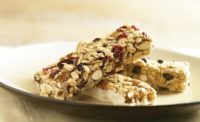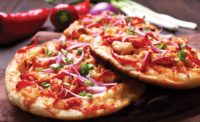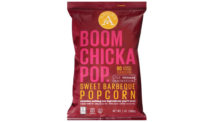Fueling private label snack and bakery sales through innovation
More consumers are willing to try store brands—and they want to see innovation.




By all accounts, the private label sectors of the snack and bakery markets are doing quite well. Overall, across all food and beverage categories, store brands accounted for about half of all sales growth recorded in major U.S. retail channels, according to the 2019 “Private Label Yearbook” from the Private Label Manufacturer’s Association (PLMA), with dollar sales advancing 4.4 percent in 2018 and unit sales increasing 3.1 percent. Compare this to the 1.1 percent rise in dollars spent on national brands (and the 0.4 percent decrease in units sold) and it becomes obvious that consumers are increasingly interested in private label.
This momentum doesn’t appear to be slowing down anytime soon. PLMA says this is part of a five-year trend that has seen private label dollar volume in the mass retail channel surge 41 percent, compared with a gain of only 7.4 percent for national brands.
And this growth is coming from across the board. “While most research identifies younger consumers as generally less brand loyal and more likely to try something new as opposed to older consumers who are more likely to default to their favorite brand or product, the reality is that interest in private brands is growing across the board as more and more retailers have renewed focus on their private brand programs,” says Bob DiNunzio, director of category strategy, Daymon, Stamford, CT.
Further driving sales is the fact that retailers are going beyond simply offering lower prices on store brands to bring products to market that are truly differentiated, either with new flavors or formats, better-for-you benefits, or innovative or convenient packaging.
Distinct offerings
Although 95 percent of consumers buy at least some private label food and drink, according to the January 2019 “Private Label Food and Drink Trends” report from Mintel, two-thirds say they’re buying about the same amount of private label products as they were last year. This suggests that there are some established patters that could be in need of disruption.
According PLMA, bread and other baked goods represent the fourth-largest private label category by dollar volume (behind paper products, milk and cheese), making up about 30 percent of the market for such products. Measured in unit volume, baked goods were the second-highest-performing private label category, taking up about 35 percent of the market share. Private label snacks didn’t fare as well, clocking in at 15th largest category in terms of dollar volume, and accounting for just 8.7 percent of the dollar share in the category and 10 percent of the unit share.
What’s holding these categories back? According to Mintel, some private label options fall short in the areas of quality and taste, within six out of 10 consumers saying they prefer the taste of national brands to that of store brand products. That said, baked goods have a unique opportunity to compete here, as Mintel found that freshness holds considerable appeal with private label shoppers.
“Within bakery, taste and indulgence are still key for consumers,” says DiNunzio. “While there is an interest in better-for-you attributes, such as no high-fructose corn syrup, artificial colors or artificial flavors, shoppers want baked sweet goods to be calorie-worthy treats.”
This is not lost on store brands, which are tapping into better-for-you trends without compromising on taste by offering a portion-controlled product. “Savvy retailers are offering extensive displays of cake and pie slices, mini desserts, and single-serve cupcakes—anything in small, portable formats,” says DiNunzio. “Placing these items within meal solutions or grab-and-go prepared foods sets increases traffic and sales. It’s a great opportunity for customers to feel good about treating themselves.”
When it comes to private label snacks, portability and satiety play increasingly important roles, says DiNunzio, as consumers lead busier lives and rely on snacking to get them through the day. And since they rely on snacks to sustain, healthy attributes are important.
“Although health and wellness historically hasn’t been a driver for the category, this shift is reflected in new snack product innovation, including plant-based formats, better-for-you ingredients and functional benefits,” says DiNunzio. “However, price and taste are still the two primary drivers for most snacks like chips. The ideal combination is to have a great-tasting snack that happens to have better-for-you qualities.”
Indeed, according to Mintel, half of consumers say that improved store brand quality would interest them, representing an opportunity for communicating improvements in private label snack formulations.
Looking for a reprint of this article?
From high-res PDFs to custom plaques, order your copy today!








